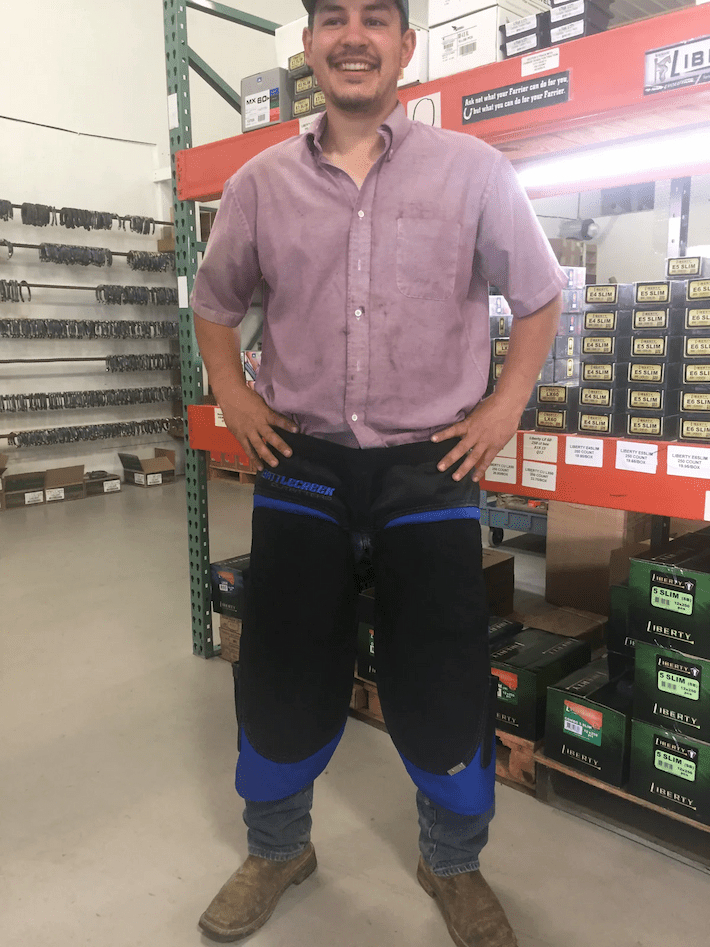Working with horses can be thrilling and deeply fulfilling, but it’s not without its risks. As a farrier, your role goes beyond keeping hooves healthy. You trim, shape and balance them, and often fit horseshoes with precision. While it may seem simple, the job puts you in close contact with sharp tools, strong hooves and long stretches of bending or kneeling.
That’s why having the right protective gear, especially durable chaps, is essential if you want to stay safe on the job. Keep up with the beat of your workspace with a durable farrier apron designed to hold up against sparks, debris and daily wear. The fabric blend of heavy denier materials with protective coatings means you’re getting a piece that resists tearing and moisture.
It also allows you to stay comfy enough for long workdays. These aprons include strategically placed corrosion-resistant magnet holders that keep your essential tools close by and your hands free when you need them most. This means you’re working with gear that boosts your efficiency and safety.
Why are Chaps Important?

Being a farrier is a mix of anatomy knowledge, skill with a forge and the ability to handle different hoof shapes and conditions. Most of the job takes place close to the ground, holding up a horse’s leg while working with rasps, nippers, or a hoof knife. It’s hard, physical work and sometimes unpredictable. Horses don’t always stay still, and even a small misstep or sudden movement can cause a bruise, cut, or worse if you’re not properly protected.
Why do farriers wear chaps? Just like you wouldn’t hop on a motorcycle without a helmet, it doesn’t make sense to work under a horse without wearing sturdy farrier chaps. What might look like simple workwear plays a huge role in keeping you safe. Studies have shown that a large percentage of farrier injuries affect the lower legs, from kicks and slips with sharp tools to burns during hot shoeing.
On top of safety, there’s also the strain of the work itself what with hours of crouching, bending and kneeling on hard ground. Over time, that takes a toll on your back, knees and joints. A well-made farrier apron or chaps helps cushion against impacts, reduces soreness, and makes long days a little easier to manage. It’s an investment not just in safety, but also in longevity and comfort in a demanding profession.
Key Features
Not every pair is built to the same standard. Settle for flimsy gear and you’ll probably end up with more bruises and burns than protection. If you want something that has your back (and legs), here are the features that matter:
- Tough, protective material: Heavy leather or strong synthetics are built to take a beating. They can drastically cut down the chance of deep cuts when you get clipped by a hoof or sharp tool.
- A fit that works with you: If your farrier apron chaps are hanging loose, they’ll slide around when you move. If they’re too tight, you’ll feel like you’re working in a straitjacket. The sweet spot is snug but flexible.
- Extra support at the knees: Farriers spend a lot of time working low to the ground, which means your knees are under constant pressure. Reinforced or padded knee areas take some of that load off, saving you from the aches that build up over time.
- Heat and spark protection: Look for gear that’s rated to handle high heat so you’re not dealing with burns or melted spots.
- Convenient pockets or holsters: Keeping tools within reach is a game-changer. The addition of side or thigh pockets means you’re not constantly bending down or losing track of your rasps, knives, or picks.
- Breathable lining: Farrier work gets hot, especially in stuffy barns. A lining that wicks away sweat or allows air to flow keeps you more comfortable and cuts down on irritation.
Usage and Upkeep

If you keep your farrier aprons and chaps in good shape, they will last longer and continue to protect you while you’re on the job. After a long day, it helps to brush away dirt and hoof trimmings before they have a chance to grind into the fabric. Giving them a quick clean once in a while, whether that’s with a damp cloth or a gentle wash, makes a huge difference. If you’re working with leather, though, plain soap and water won’t cut it. A proper cleaner will keep the material from drying out or cracking.
It’s also worth giving your farrier chaps a careful look every so often. A small tear around the knees or frayed stitching on a pocket might not seem like much, but those weak spots can spread quickly if you don’t catch them early. For those made of leather, a little conditioning every few months goes a long way. It keeps the material flexible and adds years of life to your investment.
Horse Comfort and Safety
Wearing reliable protective gear doesn’t just keep you safe, it also helps the horse. Animals are sensitive to tension, and if you flinch at the slightest bump, a horse can pick up on that and become uneasy. Having sturdy chaps allows you to stay calm and steady while handling their legs, even if they shift or kick unexpectedly. That calm presence makes hoof care less stressful, helping the horse trust you more and making each session smoother for both of you.



